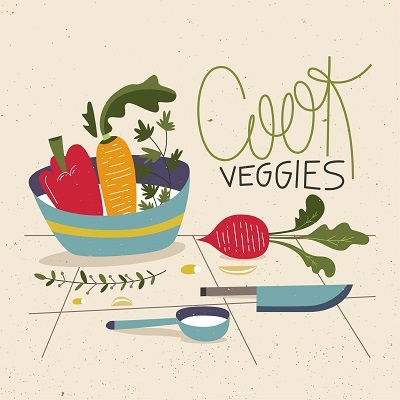 Eating vegetables can be very beneficial to you in a lot of different ways. As you include more vegetables to your diet, you get to protect yourself from certain types of cancers, heart disease, and Type 2 Diabetes.
Eating vegetables can be very beneficial to you in a lot of different ways. As you include more vegetables to your diet, you get to protect yourself from certain types of cancers, heart disease, and Type 2 Diabetes.
What’s more, these food sources are packed with nutrients and vitamins that will give you an added boost of energy. On top of it all, being healthy inside can make look younger, healthier and more attractive on the outside.
Sadly, a lot of people do not like to eat these healthy and nutritious food sources. To them, eating vegetables is a chore that they need to do, in order to stay healthy and fit.
For the most part, they consider vegetables as an unfortunate yet essential part of their meal. But little do they know, vegetables can be really delightful and gratifying.
Vegetables can be cooked and prepared in a variety of ways, from boiling to roasting. Unfortunately, not all of these cooking methods can create appetizing and healthy vegetable dishes.
Luckily, though, this guide can help you learn the best techniques in cooking healthy and sumptuous vegetables.
A good sign that vegetables are properly cooked is by looking for a very bright and vibrant color. When the color is dull or dark, such as, the case with green beans or Asparagus it’s a sure sign that they are over cooked.
Without further ado, here the healthy ways to cook vegetables without sacrificing flavor:
Steaming versus Boiling
Boiling is by far the easiest and most convenient way of preparing a vegetable dish. In this cooking method, all you need is a cooking pot filled with water. To add more flavor to the dish, you may add a small serving of salt and spices to your vegetables.
Although boiling is simpler and easier than other cooking methods, it may not be ideal for health buffs as well as those who want to savor delicious vegetables. Basically, boiling water strips some of the essential nutrients of the vegetables you are preparing. What’s more, it leeches the flavor from your vegetables.
Steaming, on the other hand, allows you to cook vegetables without losing their nutrients and vitamins, furthermore, it helps the vegetables retain their delectable natural flavor. If you want additional flavor from your vegetables, try sprinkling in a dash of salt, some garlic or any favorite spice.
As with boiling, steaming is fairly convenient and easy, even for someone with little to no experience in cooking. To steam vegetables, you just need a good and reliable steamer. But if you do not have a steamer, you may use a pot with a steaming basket.
Baking
There are some vegetables that can retain more antioxidants, flavor, and nutrients when baked. Peppers, eggplants, broccoli and asparagus, for instance, are healthier and more delicious when they are prepared in this method.
Roasting is a great option for Asparagus and Brussel Sprouts.
Sautéing
Sautéing, or also referred as stir-frying, is without a doubt, one of the healthiest ways to prepare a vegetable meal. In sautéing, the vegetables are cooked in a very high temperature while being stirred by the cook. Since the vegetables are cooked in a high temperature, sautéing quickly cooks your vegetables and reduces the loss of nutrients and vitamins.
As far as the taste goes, sautéing won’t compromise your vegetables’ flavors. As a matter of fact, sautéing can retain the vegetable’s natural flavors better than steaming and boiling. In addition, it blends fairly well with spices and seasonings.
But unlike other cooking methods, sautéing requires you to keep an eye on the prepared vegetables at all times, or else the vegetables will burn quickly, and lose their flavors and essential nutrients.
Microwave Cooking
Microwave cooking prepares and cooks your vegetables in a very rapid and efficient manner. This, in turn, causes minimal a loss of nutrients and antioxidants in your vegetables. In addition, this cooking method does not sacrifice the flavor of your vegetables or dish.



